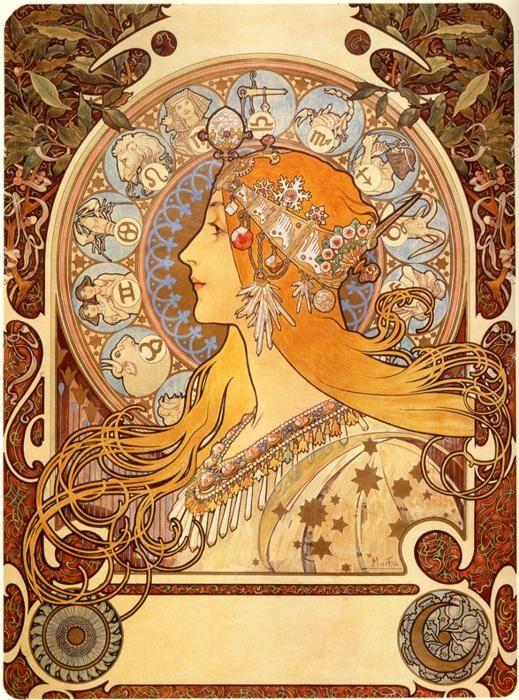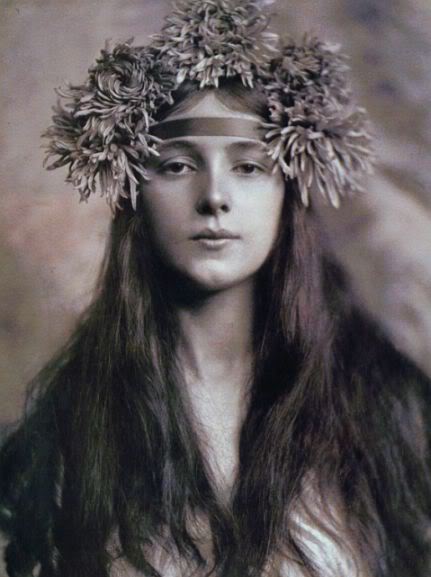(Interesting fun fact: according to this source, Evelyn Nesbit was the inspiration for Anne of Green Gables' physical appearance - very cool!) It's simple, gorgeous, and hints at the otherworldliness. Another famous girl who wore a similar headpiece was Ozma, from Frank L. Baum's Oz series (for more pictures of Ozma, check out this source):
"Old photos and old textiles, I tend to collect old textiles and I’m really into Mooka*, Alfred Cheney Johnston, Arte, Edmond Doolock*, Arthur Rackham, and so just old illustrations, old showgirl photos, stuff like that. And then that kind of influences our whole aesthetic."
One of the reasons why I love the particular aesthetic that Love has created for herself and others is the fact that it references the Edwardian era so strongly, particularly with the use of this style of head ornamentation. A quick search on google doesn't really answer many questions on where precisely this type of fashion originated from - though to be honest, I haven't had much time to commit to such a scholarly hunt lately, what with working full time and doing other personal projects - but I'm still attempting to hunt down the origins, hence why I'm writing this.
Love mentions Alphonse Mucha (mistakenly written "Mooka"), one of the most recognizable artists of the Art Nouveau period. His painting style was liquid, graphic (he is perhaps best known for his poster designs), earthy, and very stylistic. He also had a habit of painting women wearing ornate headdresses such as the one pictured below:
Mucha seems like the best place to start in order to find out just where this particular "look" originated from. His aesthetic was influenced by art from the far east - he was certainly one of the many artists of the Edwardian era to fall under the spell of "orientalism." I did a quick search of some art history journals to see what might pop up on the subject and was surprised to see... not a whole lot. Many articles mention the influence of Byzantine art and fashion as being the strongest "oriental" component of his style, but I'm not 100% satisfied with this answer. I'm sure the answer I'm looking for is out there and it's just a matter of someone clocking me on the head and saying "hey! look over here!" In the process of writing this entry, however, I came up with enough information and enough questions to write an entire dissertation, so I think I'll give my brain a break and end with this striking picture of Evelyn Nesbit, which was either taken in the same session as the previous 1903 photograph, or taken later and meant to reference this earlier image:
*"Mooka" meant to be Mucha, as in Alphonse Mucha, and this second name is meant to by Edmund Dulac.





No comments:
Post a Comment